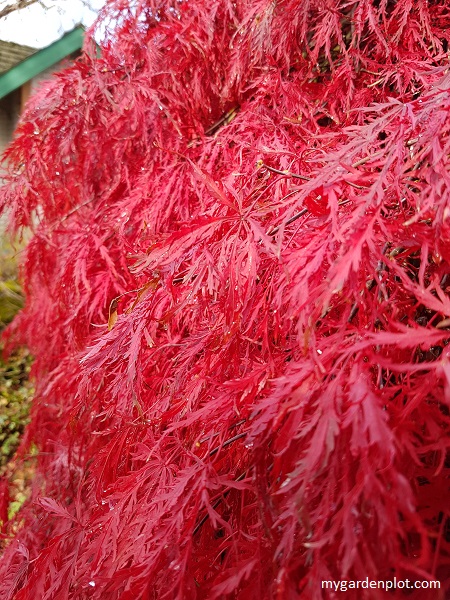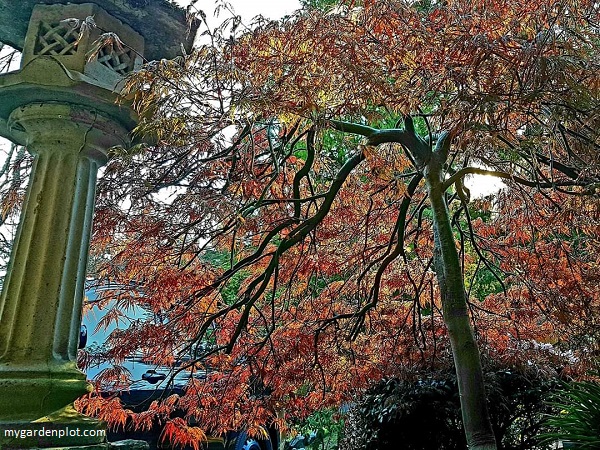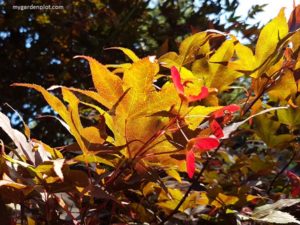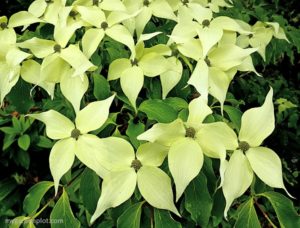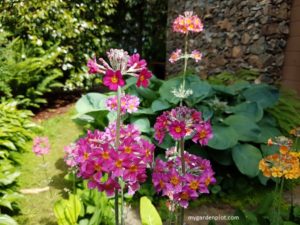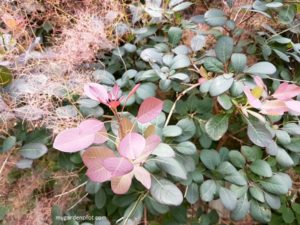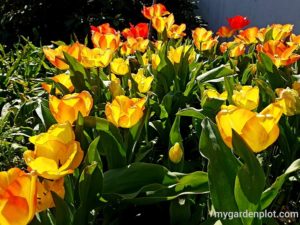About Acer palmatum var. dissectum (Weeping Japanese Maple, Laceleaf Japanese Maple)
The Acer palmatum var. dissectum is a small ornamental tree with a dissected-leaf. It is commonly known as weeping Japanese maple tree or laceleaf Japanese maple. Occasionally it is also referenced as cutleaf Japanese maple or threadleaf Japanese maple. It is native to Japan, Korea and China. The weeping Japanese Maple is a beautiful tree with its low arching branches reaching to the ground. They are a popular ornamental tree in the Pacific Northwest. And a Japanese-themed garden will always showcase at least one weeping Japanese maple tree. It is slow-growing and relatively low maintenance. More tips below how to grow and care for a Japanese maple tree in your garden.
Depending on the cultivar, weeping Japanese maple foliage colour can vary from red to bright green and all having a vibrant fall colours of yellow, orange and crimson in the autumn (fall). Its small size makes it perfect for small gardens, and it is even impressive planted in a large container. The cascading branches spreading in a dome shape adds a delicate, fern-like graceful form in a garden.
Weeping Japanese Maples At A Glance
Type: Deciduous
Location: Light Shade
Season: Spring, Summer, Autumn
When To Prune: Late Winter
Height and Spread: 2 – 3 metres (6.5 – 10 feet)
Cold Hardiness Zones: 5, 6, 7, 8, 9
Read more about Acer palmatum and A. japonicum, what the term ‘Japanese maple tree’ means, brief history, general care, and the many maple variations available.
Where To Plant And How To Grow Weeping Japanese Maple Tree (Laceleaf Japanese Maple)
Weeping Japanese Maple Tree can be grown in full sun in cooler regions but prefers a light shaded location sheltered from the hot summer afternoon sun. Plant in spring or autumn in well-draining, moisture-retentive soil. It can tolerate any soil but thrives best in rich, slightly acidic soil. It is reasonably hardy but consider the location for your weeping Japanese maple tree as it will need protection if the site is prone to spring frost and strong winds. Young spring foliage is prone to scorching in the direct sun resulting in brown tips if the sun is too intense. Keep the soil moist especially during the first year to ensure it is not stressed before it becomes established. If planted in a container it will need regular watering.
In late fall or early winter, mulch the ground around the weeping Japanese maple tree with its own dry leaves. Remove this leaf mulch before adding rich compost mulch in spring.
The weeping Japanese maple tree is relatively pest and disease-free. We only occasionally have young deer nibble young foliage but for the most part the deer leave it alone.
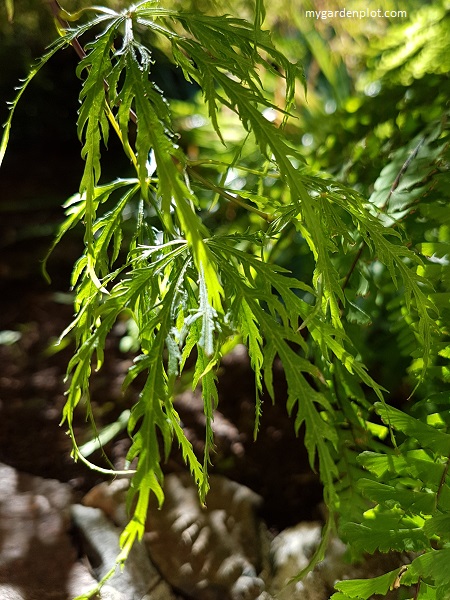
RELATED TOPIC: Buyer’s Guide On How To Choose Hand Pruners (Secateurs)
How To Prune Weeping Japanese Maple Tree (Laceleaf Japanese Maple)
Young trees can benefit from pruning to train an attractive overall shape. Mature weeping Japanese maple trees generally do not need much pruning unless it is to maintain their size or a particular form in your garden.
One of the most valued features of a weeping Japanese maple tree is the decorative branch structure. Prune to enhance the main stem and weeping form of the branches which is especially enjoyed during the winter season. This is something many gardeners enjoy by maintaining an annual light prune at their tree matures. In winter, take out some of the sucker growth to open up the canopy and draw attention to the weeping branches.
Any pruning should be done late winter and before the new spring foliage. Remove any winter deadwood and any branches that are crossing over and rubbing.
Tools Needed For Pruning Weeping Japanese Maple Trees
Below is the list of essential tools needed to prune a weeping Japanese or laceleaf maple tree:
- Pruners – Bypass pruners are the most popular choice for gardeners and a must in a pruner’s tool kit. Bypass means the blades pass each other in a scissorlike action providing a clean cut without splintering the stem’s edge. The anvil-type pruner, where the upper blade cuts against a lower flat edge, must always be kept sharp. Otherwise, it will crush the stem while trying to cut it.
- Long-handled Loppers – These are similar to pruners but with long handles. Loppers are heavy-duty and great for harder to reach stems that may also be too thick for pruners. Shop for an extendable loppers for the extra reach.
- Pruning Saw – Saws are useful for thick stems that are growing close together. A Grecian saw or Japanese-blade pruning saw is a handsaw with a curved edge that works with a pull-stroke action. Great for those stems that pruners and loppers can’t cut. It will need a protective case. We also recommend a folding hand saw with a pull-stroke action for smaller gardens. It looks similar to a large pocket knife and works in the same manner as a Grecian saw.
- Garden Gloves – Gardening gloves help keep hands clean and provide protection. Fabric gloves with vinyl offer a good grip on the fingers and palm. Good for warmer weather. For more challenging jobs, a pair of suede or leather gloves go a long way. Not too comfortable in warmer weather, though.
RELATED TOPIC: Buyer’s Guide On How To Choose A Pruning Saw
Recommended Weeping Japanese Maple Trees (Laceleaf Japanese Maples)
Acer palmatum var. dissectum (Crimson Queen) – The Crimson Queen Japanese maple tree can reach about 2 metres (6 feet) tall. Its foliage has a crimson or purple-green colour lasting throughout summer. It changes red and orange in autumn.
Acer palmatum var. dissectum (Waterfall) – The Waterfall Japanese maple tree has green leaves and can reach 3 metres (10 feet). Our waterfall tree was planted in a large container about 15 years ago, and with annual light pruning every winter, we have been able to maintain its size to just under 1 metre (3 feet). The foliage starts with a lime-green spring, changing to dark green throughout summer. In autumn, the foliage changes to gold and orange.
Acer palmatum var. dissectum (Red Filigree Lace) – The Red Filigree Lace is Similar in size to the waterfall Japanese maple tree in size. The foliage starts red in spring, turning red-purple in summer, before changing to crimson in autumn.
